Theme: COOKING ON BOARD

Dear Customer,
A nutritiously fed racing crew has the energy and concentration to perform well, while for blue water cruisers and weekend leisure boaters, a delicious meal is always the highlight of the day.
Find out more about equipment that makes cooking above or below deck enjoyable, safe, and doable even in rough conditions.
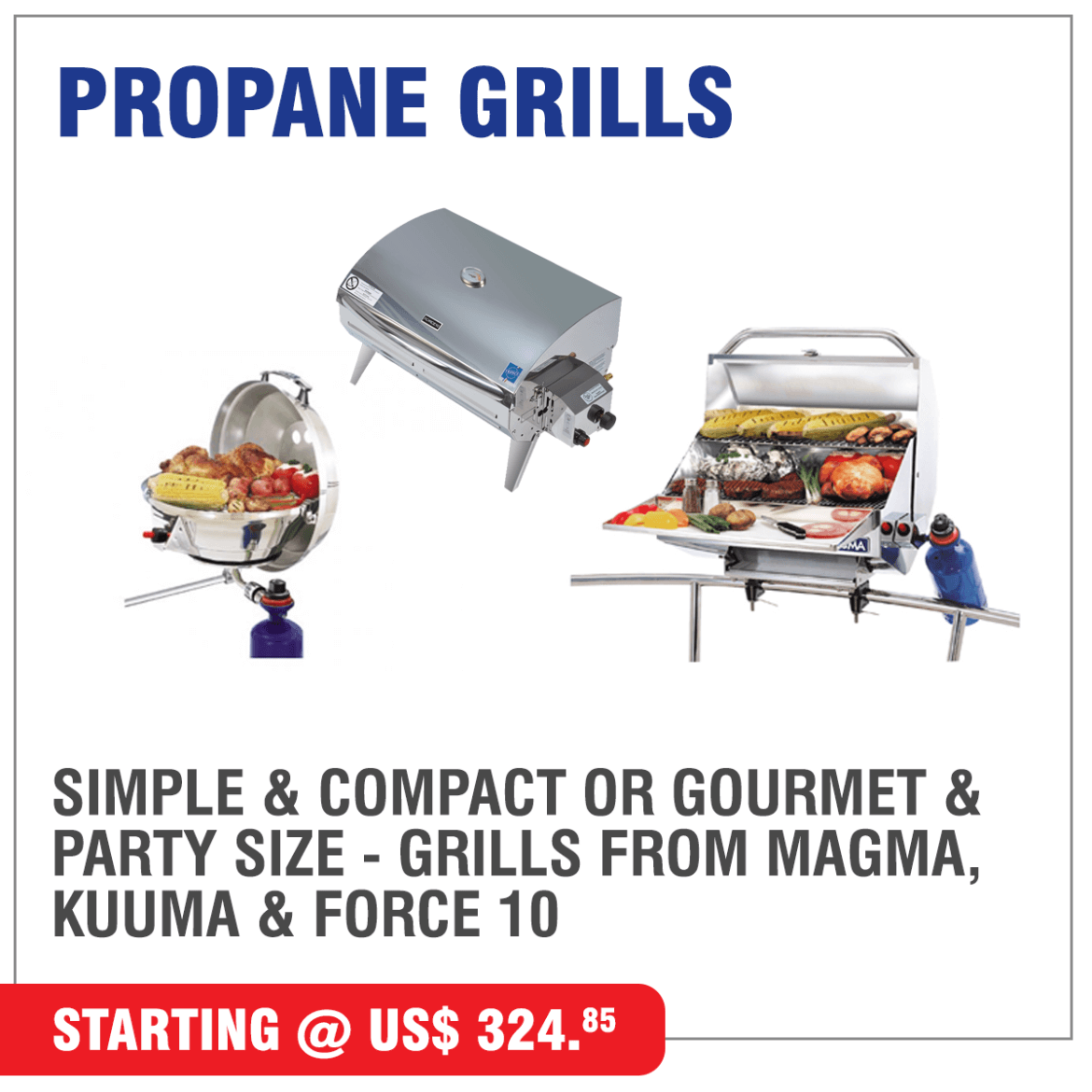
SAFETY WHILE GRILLING
- Check the grill is firmly mounted and in good condition before lighting up
- Lids get very hot and need to be attached with hinges or straps
- Keep an eye on the grill the entire time while cooking and turn it off once finished
- Prepare a bottle of water for quick dousing and cut off fatty meat portions beforehand to prevent flare ups
- Always use the grill above deck. Propane is heavier than air, so never use a gas grill above an open locker or companionway. Any leaking gas will fall to the lowest point, where it can make an explosive mixture ready to ignite under the right conditions.
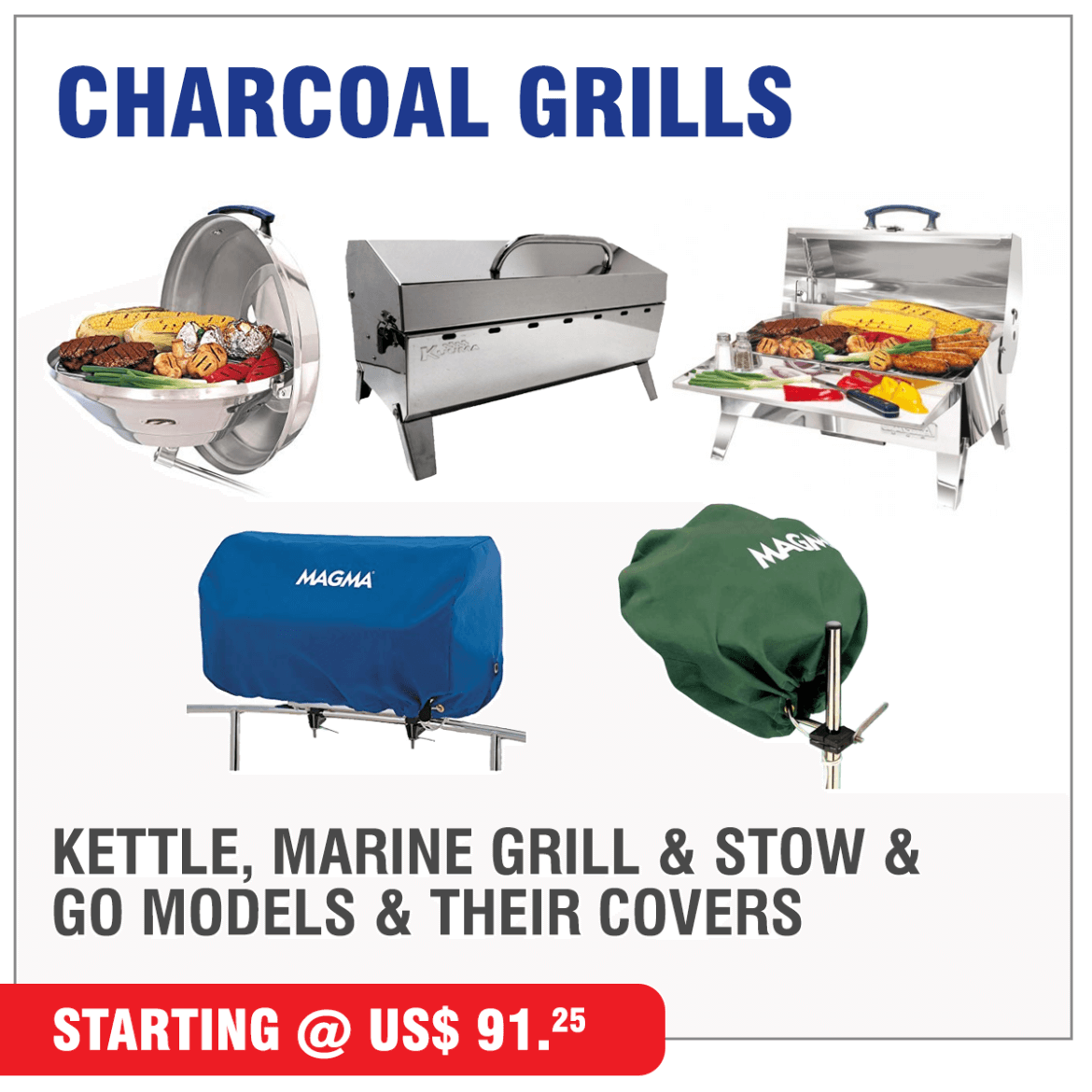
LOCATING & PROTECTING YOUR GRILL
When grilling with charcoal, always ensure that when lit, the grill is swung clear of the boat, so any escaping hot ash falls harmlessly into the water, and not onto the deck where it could do expensive damage or start a fire. Locate your BBQ at a comfortable height for standing and grilling, away from flammable fittings, and if possible, downwind on the aft deck.
Lengthen the life of your grill by cleaning it straight after cooking, and if possible, using gentle scrubbers and soaps to avoid abrasion. When not in use, protect it with a cover that wraps right around the unit from top to bottom, shielding it from wind, rain and saltwater spray from below.

STOVE MAINTENANCE
Accumulated grease and cooking debris are chief culprits when it comes to blocked gas jets, igniters, thermocouples, and burners. Interesting cleaning solutions can be found on the internet, such as soaking an encrusted burner in water with dissolved Enos for 3 hours and cleaning out a blocked jet using a little dental floss brush. Inspect the flexible hose that connects a swinging, gimbaled stove to the gas supply regularly. Where gas hose or pipe goes through a bulkhead, there should be a protective grommet to prevent chafe. Check tightness of clamps and connections to avoid leaks.
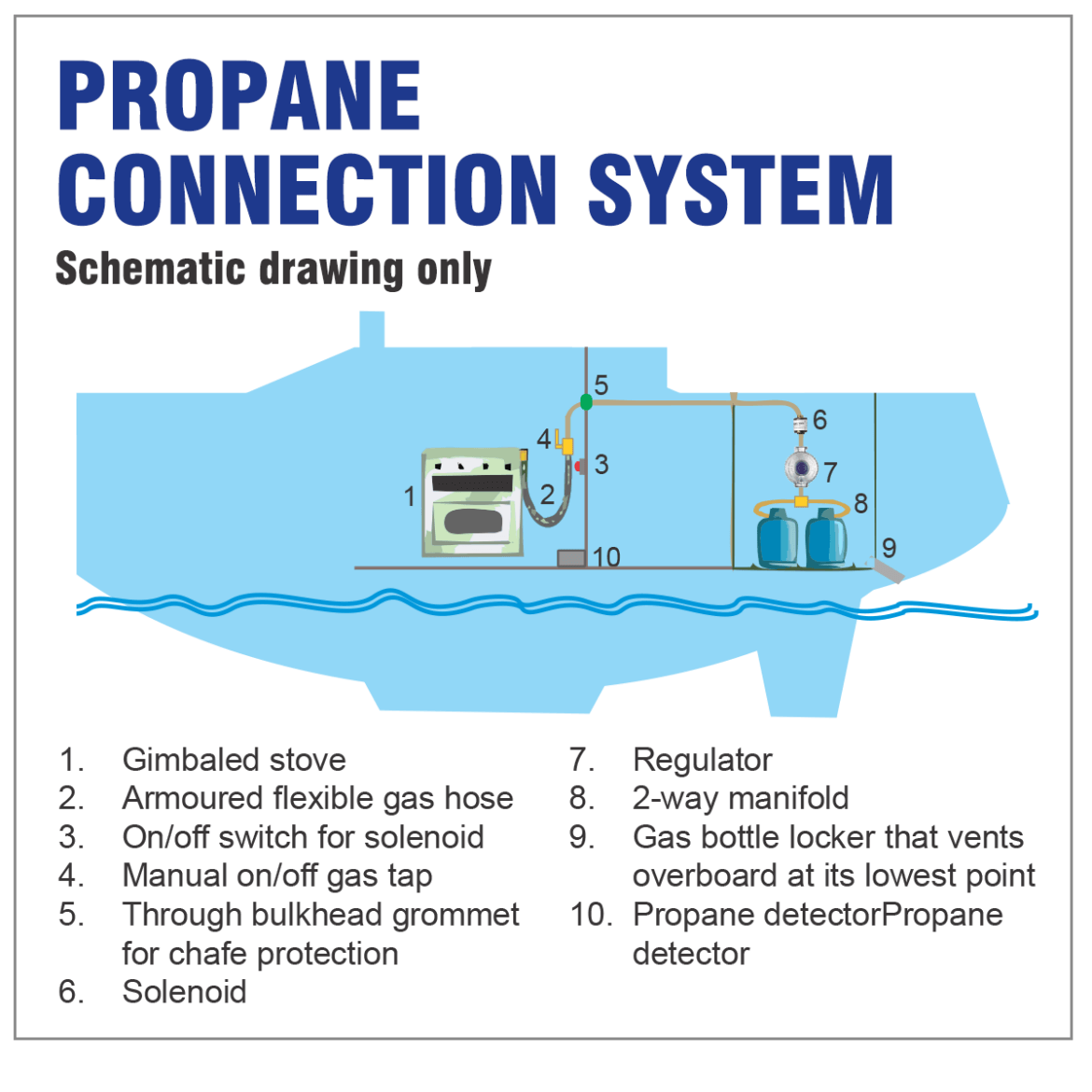
GALLEY SAFETY
More injuries at sea are caused by working in the galley than in any other way – burns from hot spills, cuts from mishandled knives, and bruises from being thrown about. Some galley safety features are:
- A fire blanket and fire extinguisher within the cook’s reach
- Lots of handholds to grab onto
- A stainless-steel safety bar in front of the stove to keep you away from hot stuff
- Stove gimbals and pot clamps to keep everything level and where it should be
- Non-skid mats and fiddles to prevent utensils from sliding and falling
Never store anything needed for cooking behind the stove.
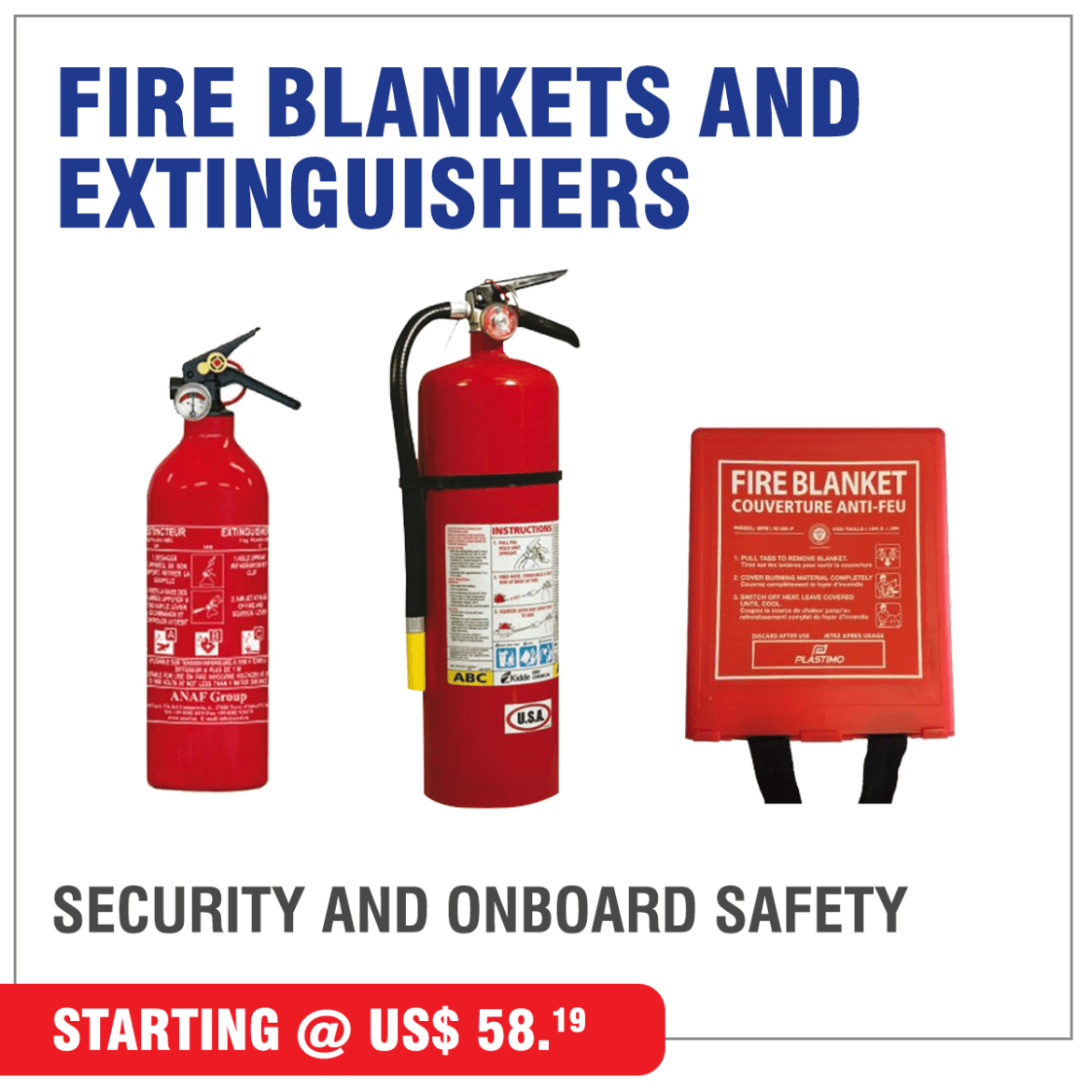
A FIRE BLANKET is used to smother the flames, starve them of oxygen and extinguish the fire before it gets out of control. A pull of the twin tabs releases the blanket from the wall container.
ABC DRY POWDER FIRE EXTINGUISHERS can be used on most types of fire. They should be regularly inspected and frequently shaken to make sure the powder is free flowing and not caked.

Type A refers to a fire involving combustible solids, including wood, cloth, paper and many plastics, including the resins used in fiberglass.
Type B refers to fires fueled by inflammable liquids, like diesel fuel, gasoline, alcohol, varnishes and oil-based paint.
Type C fires are those involving energized electrical equipment, in which there is the potential for serious shock. In this case, turning off the electricity is a top priority, at which point the technical status of the fire changes to an A or a B, depending on the materials involved.

Thermocouples are standard fittings in modern marine stoves. They are designed to ensure that propane does not flow to the burner if there is no flame there. If the flame accidentally goes out, propane won’t keep flowing, accumulate and possibly cause an explosion.
A solenoid is an electrically activated valve in the propane line from the tank to the stove, with an on/off switch located within reach of the stove, that should be turned off when not cooking. Its default mode is off, so propane will be cut off if there is no electricity coming from the batteries.
Propane detectors offer protection against the potential hazards of propane accumulating by sounding a warning. Position the sensor as low down as possible (just above or just below the floorboards) and close to the gas appliance, for faster detection in the event of a leak.

Aluminum LPG Cylinders are strong, relatively light-weight and maintenance free. Composite LPG Cylinders are non-corrosive and even lighter, with an ergonomic handle, and see-through feature showing the propane level. Both are OPD, DOT & TC Approved.
OPD = Overfilling Prevention Device – a backup safety shutoff device incorporated into the filling valve of a propane cylinder, activated by a float valve.
DOT = Department of Transport USA
TC = Transport Canada.
Make sure your boat is compliant with international gas installation regulations, such as ISO standard 10239 LPG Gas Systems for all recreational craft of less than 24 m LOA.
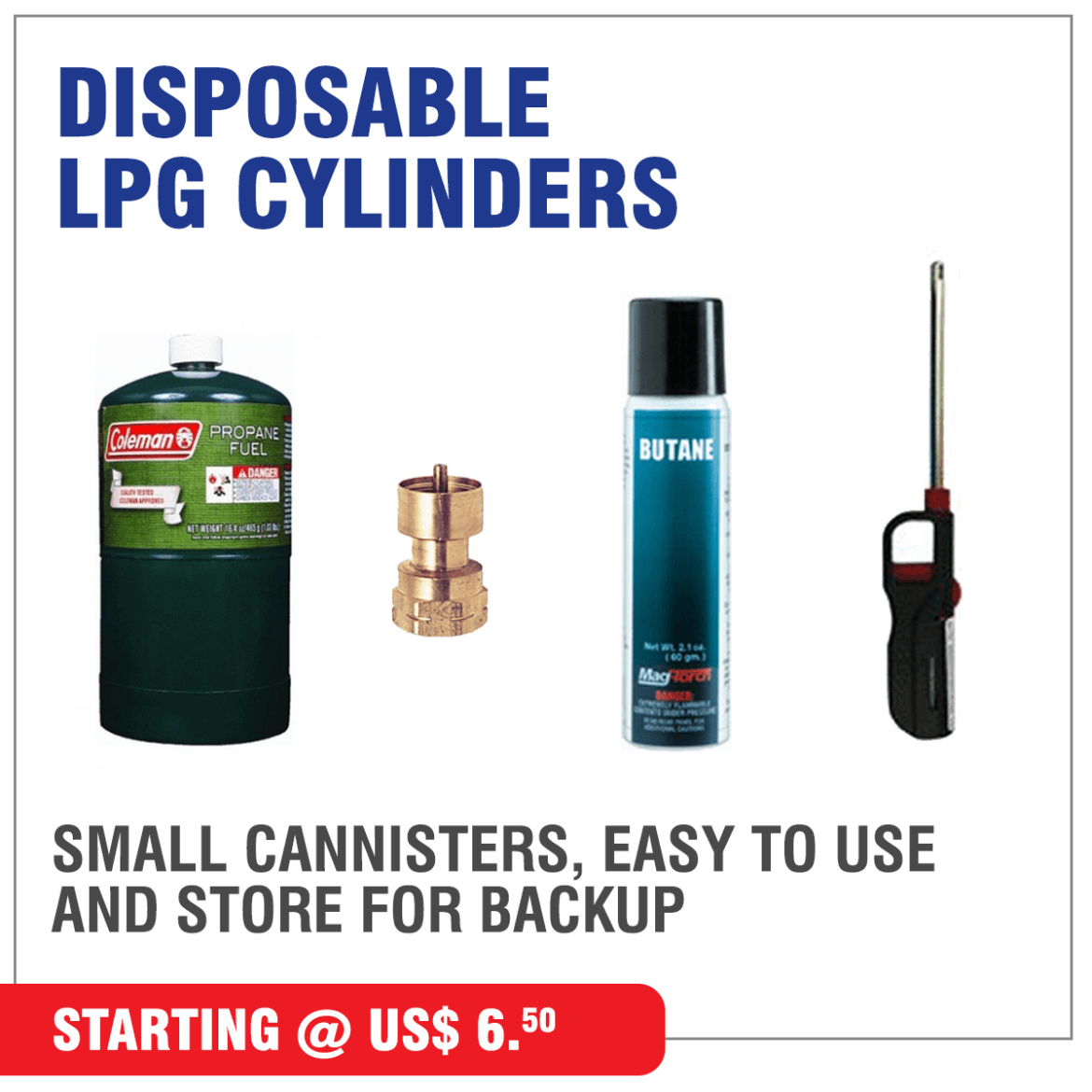
Instead of connecting your gas grill to your main propane system, a practical alternative, especially for those who stow their BBQ between grilling sessions, is to use a disposable gas cylinder that connects to the BBQ unit with an adaptor.
These disposable cannisters also provide a great back-up system when your large cylinders run out of gas. And talking of back-up, a refillable butane lighter can be a life saver if your electronic stove ignitor goes on the blink.


